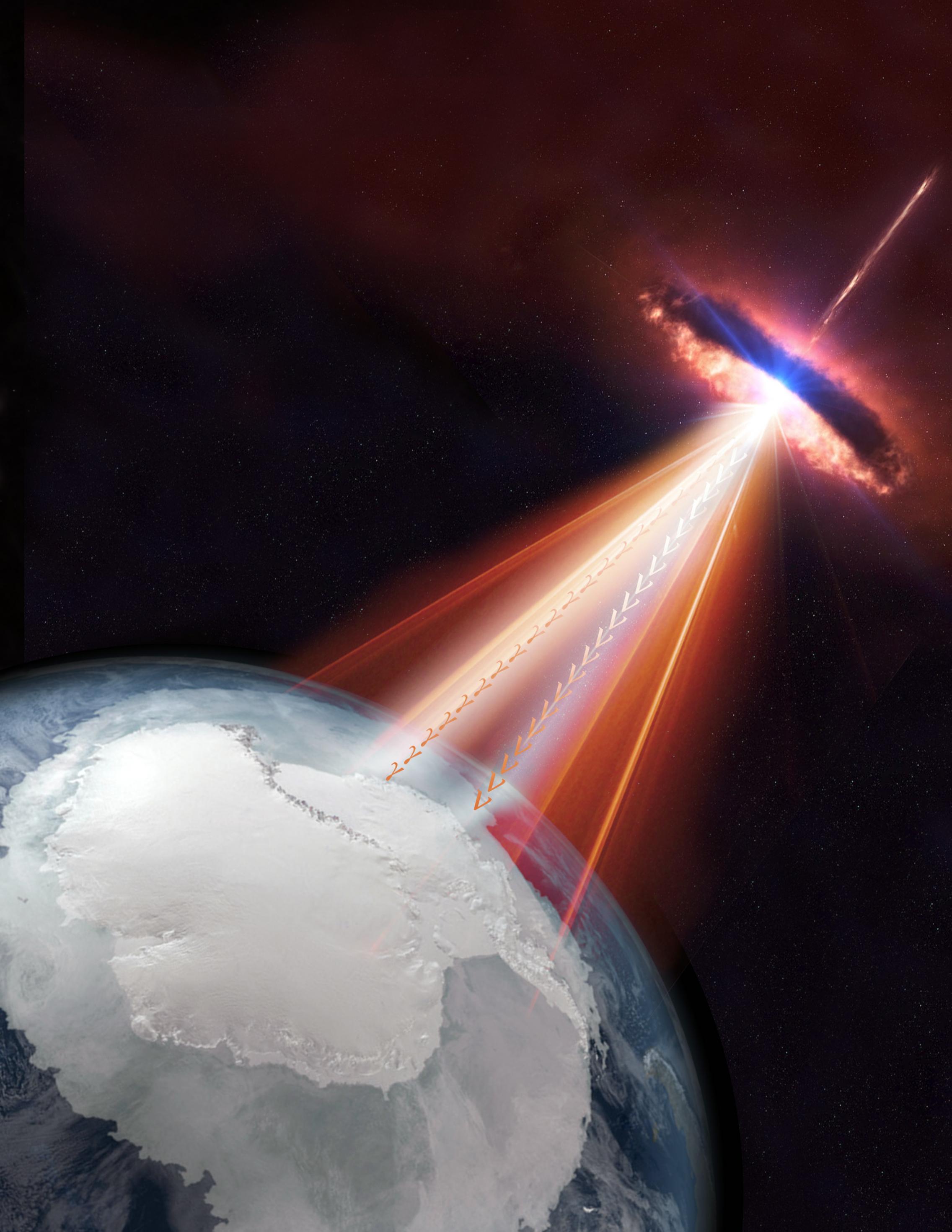First evidence of neutrino source discovered in distant galaxy

Physicists from the University of Adelaide are part of an international team who have found the first evidence of a source of neutrinos, a high-energy subatomic particle.
The source is an energetic and violent galaxy called a blazar, powered by a supermassive black hole, about 4 billion light years from Earth.
Main image: In this artistic composition, based on a real image of the IceCube Lab at the South Pole, a distant source emits neutrinos that are detected below the ice by IceCube sensors, called DOMs. Credit: IceCube/NSF

Blazars are a type of active galaxy with one of its jets pointing toward us. In this artistic rendering, a blazar emits both neutrinos and gamma rays that could be detected by the IceCube Neutrino Observatory as well as by other telescopes on Earth and in space. Credit: IceCube/NASA
What we’ve found is not only the first evidence of a neutrino source, but also evidence that this galaxy is a cosmic ray accelerator.Associate Professor Gary Hill
The observations were made in September 2017 by the IceCube Neutrino Observatory at the Amundsen–Scott South Pole Station and confirmed by telescopes around the globe and in Earth’s orbit.
The tiny but energetic particle pierced our atmosphere and smashed into Earth near the IceCube. Its detectors recorded the hit.
The collision with Earth set loose a second particle, a muon, which lit a blue streak through the clear ice. This trail of light pointed back to the intriguing source of the neutrino - a distant galaxy.
IceCube Collaboration member and University of Adelaide physicist Associate Professor Gary Hill, said this discovery points to a source of cosmic rays, another type of high-energy particle which has posed an enduring mystery since first detected over 100 years ago.
"Neutrinos at these very high energies are formed after cosmic ray particles are accelerated (boosted to very high energy) and interact with other particles,” said Associate Professor Hill.
“So, what we’ve found is not only the first evidence of a neutrino source, but also evidence that this galaxy is a cosmic ray accelerator.”
Neutrinos are uncharged subatomic particles that normally pass by the trillion through our bodies and every part of the Earth every second, but they rarely interact with matter – a fact that makes them difficult to detect.
“Now we have found the first evidence for a specific source object, a blazar, which is a very high energy type of galaxy,” said Associate Professor Hill.
“This blazar, designated TXS 0506+056, is about four billion light years from Earth.
“It’s a giant elliptical galaxy with a massive spinning black hole at its core and twin jets of light and high-velocity particles, one of which is aligned towards Earth.”
